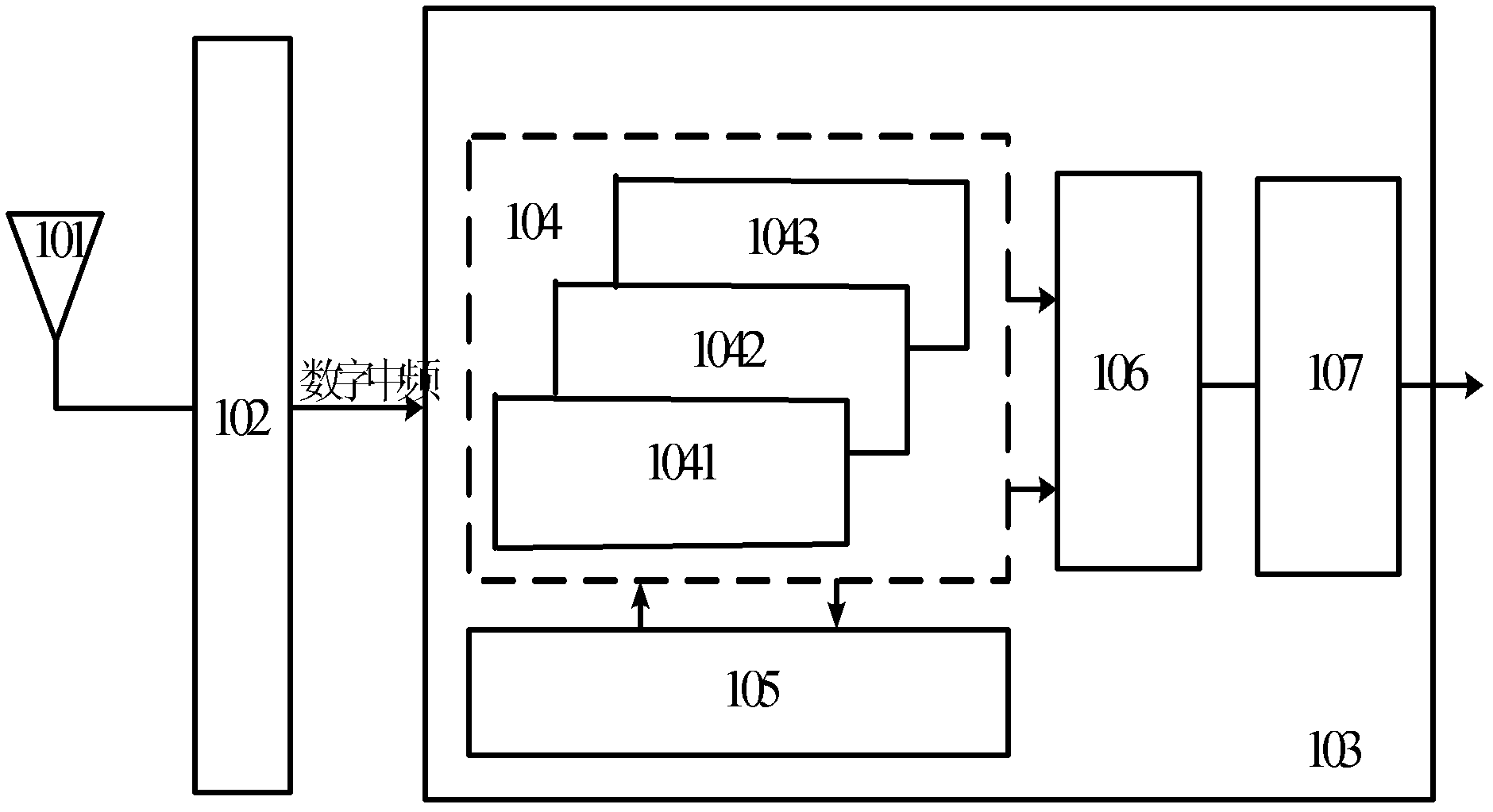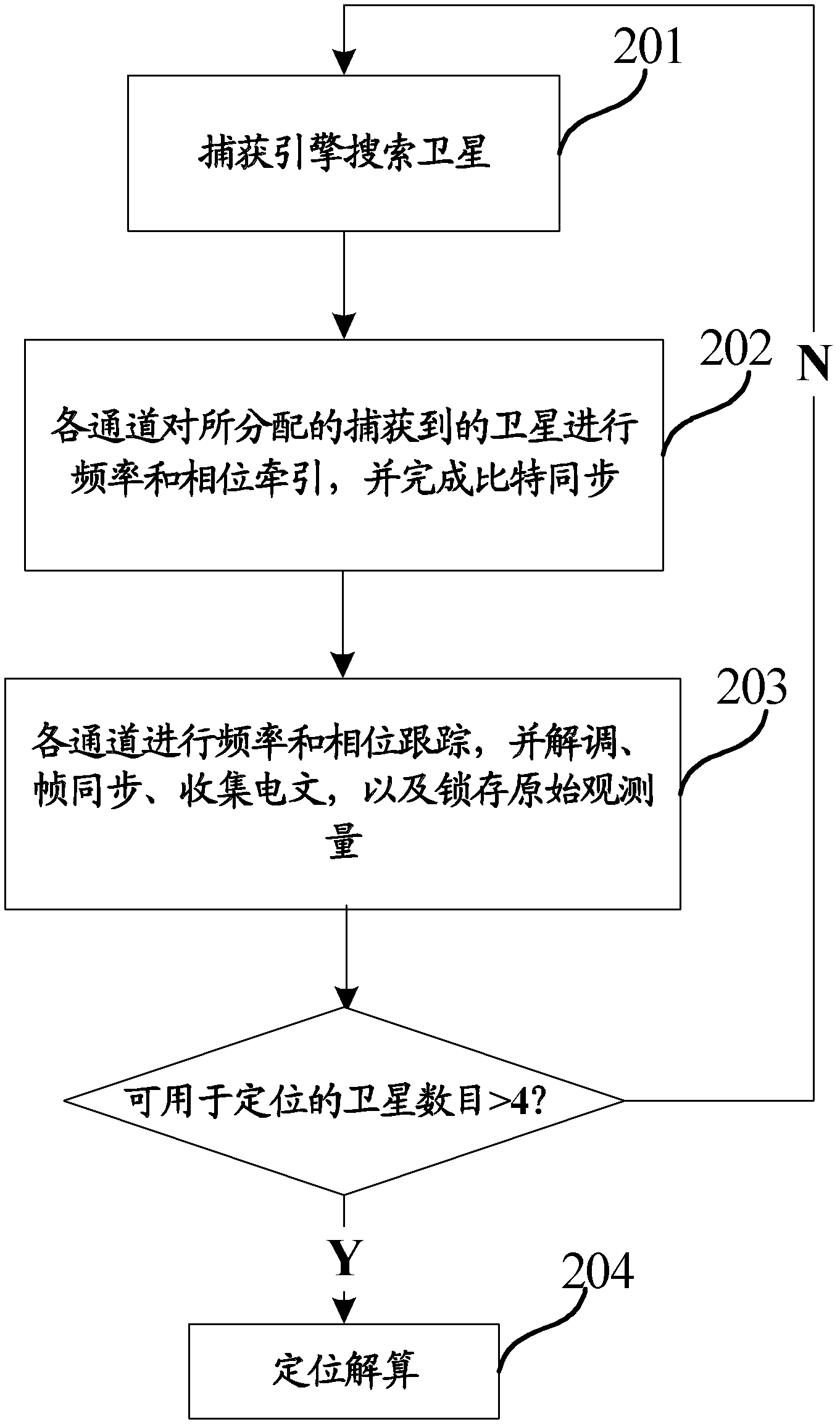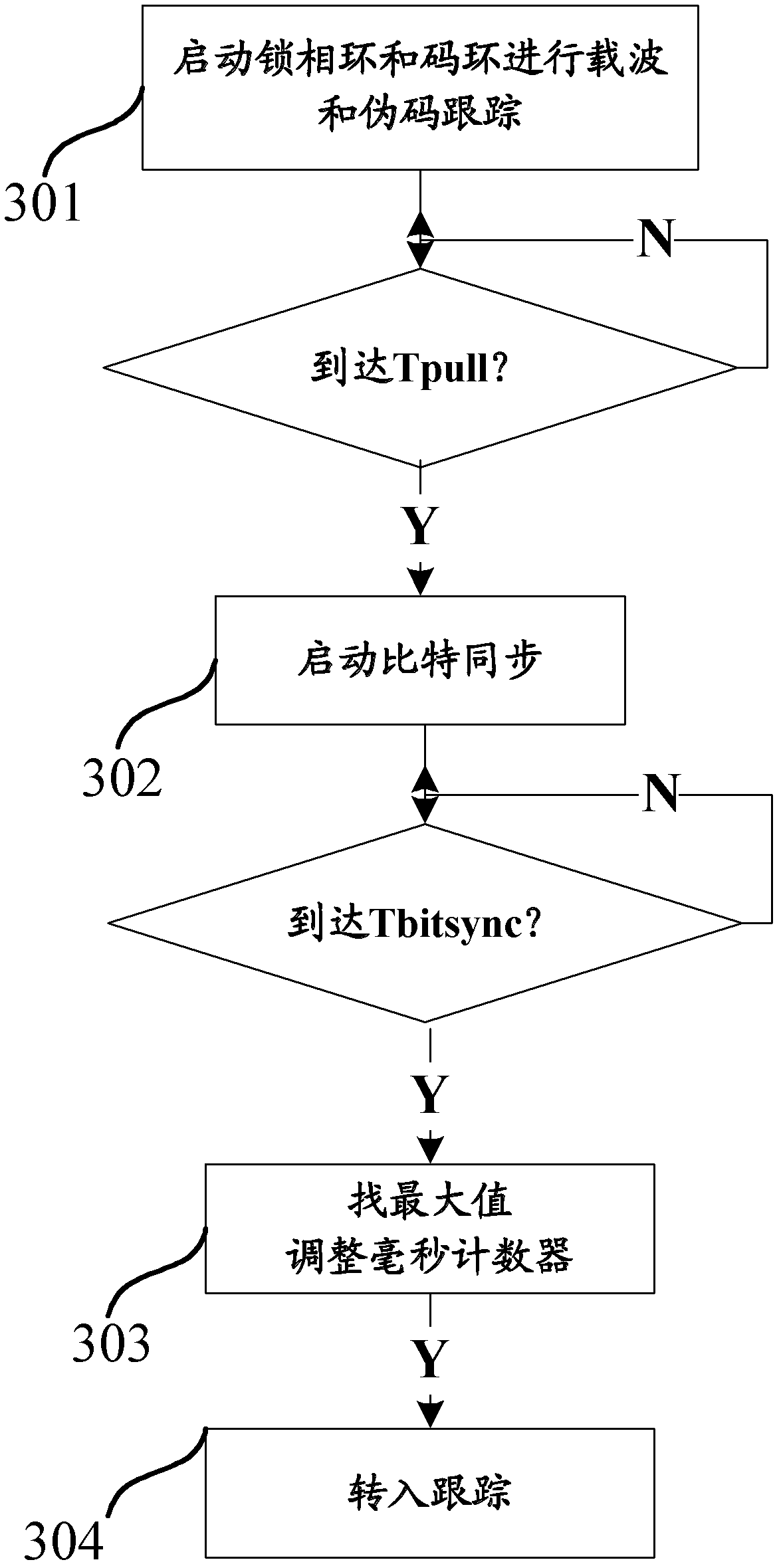GNSS signal self-adaption quick traction method
An adaptive and signal technology, applied in the field of satellite positioning and navigation communication, can solve the problems of reduced first positioning time, lack of bit synchronization verification mechanism, waste of resources, etc., and achieve the effect of reducing the probability of bit synchronization errors
- Summary
- Abstract
- Description
- Claims
- Application Information
AI Technical Summary
Problems solved by technology
Method used
Image
Examples
Embodiment Construction
[0017] The GNSS baseband chip is a chip for processing baseband signals in the GNSS receiver, and is the core of the entire GNSS receiver. A GNSS signal adaptive fast traction method provided by this application is implemented in the GNSS baseband chip. The following briefly introduces the GNSS receiver. For the sake of convenience, "receiver" in this application refers to "GNSS baseband chip".
[0018] figure 1 The illustrated embodiment depicts a block diagram of a typical GNSS receiver. This is a complete GNSS receiver, including an antenna 101 , a radio frequency front-end chip 102 , and a baseband processing chip 103 . The baseband processing part consists of several correlation channels 104 (including correlation channel 1 1041 , correlation channel 2 1042 , and correlation channel N 1043 ), acquisition processing 105 , tracking processing 106 and positioning solution processing 107 . The baseband processing part 103 receives digital intermediate frequency sampling dat...
PUM
 Login to View More
Login to View More Abstract
Description
Claims
Application Information
 Login to View More
Login to View More - R&D
- Intellectual Property
- Life Sciences
- Materials
- Tech Scout
- Unparalleled Data Quality
- Higher Quality Content
- 60% Fewer Hallucinations
Browse by: Latest US Patents, China's latest patents, Technical Efficacy Thesaurus, Application Domain, Technology Topic, Popular Technical Reports.
© 2025 PatSnap. All rights reserved.Legal|Privacy policy|Modern Slavery Act Transparency Statement|Sitemap|About US| Contact US: help@patsnap.com



